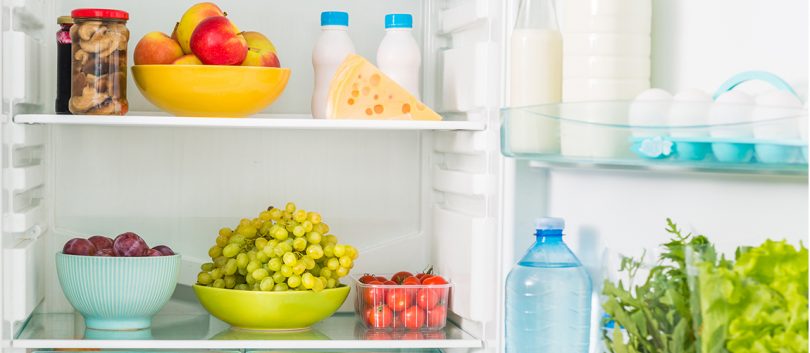Have you been thinking about losing a few pounds or just want to eat healthier in general? Start with your fridge. Go take a peek. What’s the first thing you see? Soda? Leftovers from greasy take-out? A half-eaten log of cookie dough? Where are your fruits and veggies stored?
The Science
Brian Wansink, Ph.D., director of Cornell University Food and Brand Lab and author of “Slim by Design: Mindless Eating Solutions for Everyday Life”, conducted a study and found people who moved fruit and veggies to the top shelf instead of keeping them in the crisper bin ate nearly three times more produce as they had previously. Sounds simple enough. Claudia Faretta, a Williamsburg registered dietitian agrees. “Keeping healthier foods at eye level and in front of the fridge seriously makes a difference, even with those of us who naturally eat healthy because of our profession!”
Front and Center
We’re not saying you can’t indulge from time to time. Everything in moderation, right? But if you’re trying to eat healthier, why not make it easier for yourself and the entire family? Place the fruits and veggies at eye level. Don’t limit yourself to the same varieties. Each week challenge yourself to buy a new fruit and veggie.
“All fruits and veggies have different nutrients and can fit into a healthy diet,” says Gale Pearson, a registered dietitian and certified diabetes educator at Tidewater Physicians Multispeciality Group. Portion fruits and veggies in snack size bags or clear reusable containers.
“It will become easier to grab a snack bag of veggies and fruit than chips and cookies,” says Pearson.
Don’t Forget the Protein
Faretta recommends hard-boiled eggs, low-calorie Greek yogurt, plain yogurt, skim milk, tofu, lean turkey and chicken breast and salmon. To satisfy your craving for something crunchy, she suggests almonds, walnuts, pecans, pine nuts and sunflower seeds. Since they contain high amounts of oil, they’ll stay fresh longer in the fridge.
If you prefer the ease of lunchmeat to assemble the kids’ sandwiches look for low-sodium and nitrate-free options. Pre-packaged lunchmeats usually have preservatives and sodium to keep them fresh longer. “I would stick to chicken breast, roast beef and turkey breast deli meats since they’re less likely to be processed,” says Faretta.
Inside the door
Condiments and creamy salad dressing can add calories quickly to even the healthiest dishes. Pearson says to stock the door with assorted vinegars and mustards, hot sauce, low sodium ketchup, light mayonnaise, low sodium soy sauce, lemon and lime juice, 100 percent jams and jellies, and low-sodium/low-fat salad dressings with less than 110 calories per serving.
Cool Treats
Faretta likes to mix salsa and hummus for a veggie dip. Since hummus calories can add up quickly, the salsa helps bulk it up and give it some kick.
Craving sweet and creamy? Soak old-fashion oats in unsweetened almond milk overnight and add berries and nuts after warming it up.

